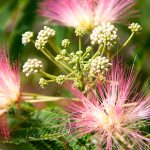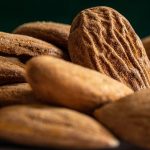Curdlan is a type of polysaccharide that is classified as a bacterial exopolysaccharide (McIntosh et al., 2005). It is produced by certain strains of bacteria, primarily Agrobacterium species, through a fermentation process. Curdlan is known for its unique gel-forming and thickening properties, making it a versatile ingredient in various industries. It should be better known in the food industry however. In this article, we will explore curdlan in more detail, including its structure, production, applications, and potential health benefits.
Structure of Curdlan: The polymer is composed of a linear chain of glucose units connected by β-1,3-glycosidic bonds. This particular linkage gives it distinctive properties. The glucose molecules are arranged in a helical conformation, creating a rigid structure that allows for the formation of gels and films.
Production of Curdlan: Curdlan production involves the fermentation of bacteria, primarily Agrobacterium species. The fermentation process typically starts with the inoculation of the bacterial culture into a nutrient medium containing a carbon source, nitrogen source, and other necessary nutrients. Glucose or sucrose is commonly used as the carbon source. Under controlled conditions of temperature, pH, and oxygen supply, the bacteria produce and secrete the material into the surrounding medium. After fermentation, the gum is harvested, purified, and processed into various forms for commercial use.
A gum similar to curdlan is produced by some human pathogenic bacteria such as Streptococcus pneumoniae (Adeyeye et al., 1988).
Applications of Curdlan:
- Food Industry: Curdlan is widely used in the food industry as a gelling agent, stabilizer, and thickener. It can be used to create gels with varying textures, from soft and elastic to firm and brittle. Curdlan gels have excellent heat stability and can withstand a wide range of pH levels. They find applications in various food products, including sauces, dressings, bakery fillings, dairy desserts, and confectioneries.
- Pharmaceutical and Biomedical Applications: Curdlan has shown potential in pharmaceutical and biomedical fields. Its biocompatible and biodegradable nature makes it suitable for drug delivery systems, wound dressings, and tissue engineering scaffolds. Curdlan-based nanoparticles have been explored as carriers for targeted drug delivery. Additionally, curdlan has demonstrated immunomodulatory properties, stimulating the immune system and potentially finding applications in immunotherapy.
- Industrial Applications: Curdlan has been used in various industrial applications due to its unique properties. It is utilized in the production of oil-well drilling fluids to increase viscosity and control fluid loss. Curdlan-based films and coatings have been developed for packaging materials, providing barrier properties and prolonging the shelf life of perishable goods. The gel-forming ability of curdlan also finds applications in the production of gel-based products, such as personal care items and cleaning agents.
- Agriculture and Plant Biotechnology: Curdlan has been investigated for its potential role in plant biotechnology. It can act as a plant growth regulator, promoting root growth and enhancing plant tolerance to various stresses. Curdlan-based formulations have been explored for seed treatment, improving seed germination and seedling vigor. The use of curdlan in agriculture may contribute to sustainable and enhanced crop production.
Potential Health Benefits of Curdlan:
Research suggests that curdlan may have several health benefits, although further studies are needed to fully understand its mechanisms and potential applications. Some potential health benefits include:
- Immunomodulatory Effects: Curdlan has shown immunomodulatory properties, meaning it can modulate the immune system. It has been found to stimulate immune cells, such as macrophages and natural killer cells, and promote the production of immune mediators like cytokines. This immune activation may help enhance immune responses and potentially improve immune-related conditions or therapies.
- Antitumor Activity: Studies have suggested that curdlan exhibits antitumor properties. It has demonstrated the ability to inhibit the growth and spread of certain types of cancer cells in laboratory studies. Curdlan’s antitumor effects may be attributed to its immunostimulatory properties, which can enhance the body’s immune response against cancer cells. However, more research is needed to determine the specific mechanisms and potential applications in cancer treatment.
- Anti-inflammatory Effects: Curdlan has shown potential anti-inflammatory effects in experimental models. It has been observed to suppress the production of pro-inflammatory molecules, such as cytokines and chemokines, in various cell types. By reducing inflammation, curdlan may have implications in managing inflammatory conditions and promoting overall health.
- Gut Health and Microbiota Modulation: Some studies have suggested that curdlan may have positive effects on gut health and the gut microbiota. It has been shown to promote the growth of beneficial bacteria, such as Bifidobacterium and Lactobacillus species, while inhibiting the growth of harmful bacteria. This prebiotic effect could contribute to a healthier gut microbiota composition and improved digestive function.
- Antioxidant Activity: Curdlan exhibits antioxidant properties, which can help combat oxidative stress in the body. Oxidative stress is linked to various chronic diseases and aging processes. By scavenging free radicals and reducing oxidative damage, curdlan may contribute to overall cellular health and potentially provide protective effects against certain diseases.
It’s important to note that while these potential health benefits are promising, much of the research on curdlan’s effects has been conducted in vitro (in laboratory settings) or on animal models. Further clinical studies are necessary to determine the specific dosage, safety, and effectiveness of curdlan in humans.
As with any dietary supplement or bioactive compound, it’s advisable to consult with a healthcare professional before considering curdlan supplementation, especially if you have any underlying medical conditions or are taking medications.
References
Adeyeye A, Jansson P-E, Lindberg B, Henrichsen J (1988) Structural studies of the capsular polysaccharide from Streptococcus pneumoniae type 37. Carbohydr Res 180 pp. 295–299 (Article)
McIntosh, M., Stone, B. A., & Stanisich, V. A. (2005). Curdlan and other bacterial (1→ 3)-β-D-glucans. Applied Microbiology and Biotechnology, 68, pp. 163-173.


Leave a Reply